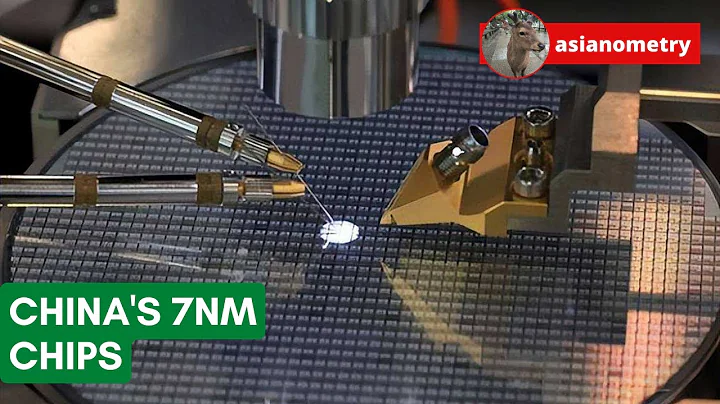A few days ago, Sister Sa wrote a short popular science article, that is, "There is no relationship between teratoma and whether you have sex or not." Sister Sa found that many readers left messages in the background saying:
"What is teratoma?" ? Never heard of it!"
Another girl left a message with Sister Sa in the background:
"My mother said she had teratomas because she was pregnant with twins, but I pushed them out. Go, it didn’t develop well and turned into a teratoma! "Hyper
girl, this must be your biological mother, but your mother is letting you take the blame!

In response to everyone's request, Sister Sa will give a good science introduction to teratoma tumor today.
What exactly is teratoma?
Teratoma, which sounds terrible, feels like a fetus that has grown into a deformity. In fact, teratoma is not a serious fetal malformation during pregnancy. The real source of should be the germ cells of the ovary.
It is a member of ovarian germ cell tumors and is a group of tumors derived from ovarian primitive parenchymal cells.

Compared with the tumors we usually see, the composition of teratomas is often more complex, because the tumors you usually see may be pure water or pure meat.
But teratomas are different. They are generally composed of multiple germ layer tissues. Occasionally, there are relatively simple ones with only one germ layer component, which can contain oil, hair, and even teeth and bones.
Mature teratoma
Most teratomas are maturely differentiated. Mature teratomas are also called dermoid cysts and are benign tumors . Mature teratomas account for 10% to 20% of ovarian tumors and 85% to 97% of ovarian germ cell tumors. Among all teratomas, the proportion of mature teratomas can be 95% above.
In other words, the vast majority of teratomas are benign. Who is prone to
?
Mature teratoma can occur in patients of any age. It is more common in women aged 20 to 40. It is usually unilateral, but there are also bilateral ones. This proportion is relatively small, about 10% to 17%. .
Teratoma is usually not too big, and there is usually no obvious discomfort. During the examination, I found out, hey, why is there a tumor on the ovary, and the echo inside is uneven or strong?

In fact, this is because the composition of teratoma can contain three types of germ layer tissues: outer, middle and inner. Relatively dense tissues such as teeth and bones may show strong echoes, and some teratomas may even have a ball of hair inside when they are cut open.
So is it better to differentiate into a single germ layer?
is not necessarily the same. If it is a single germ layer differentiation, it may form highly specific teratomas, such as thyroid tissue, which is like an extra thyroid gland on your ovary, and it also secretes thyroid hormones, and may even cause Hyperthyroidism.
So mature teratomas will not become malignant?
No, mature cystic teratomas also have the possibility of malignant transformation. Generally speaking, the malignant transformation rate is about 2% to 4%. It mostly occurs after menopause and often occurs in the "scolex" of teratomas. , if the teratoma that has been there for many years is suddenly found to increase in size after menopause, attention must be paid to ruling out the possibility of malignant transformation as soon as possible.

Immature teratoma
Since mature teratomas are benign, you can probably guess that immature teratomas are definitely not that good.
Immature teratomas are malignant germ cell tumors, although the proportion is relatively low, accounting for 1% to 3% of ovarian teratomas. It is more common in young girls, with an average age of 11 to 19 years old.
Immature teratomas are mostly solid, and may also have cystic areas. They commonly contain 2 to 3 germ layers and are composed of immature embryonic tissues with different degrees of differentiation. The most common ones are primitive neural tissues.
Immature teratomas have different proportions of immature tissue, degree of differentiation, and neuroepithelial content, and their degree of malignancy is also different. To put it simply, the worse the differentiation and the more original tissue, the more malignant it is.
As a malignant tumor, the recurrence and metastasis rate of immature teratoma is relatively high. However, there are also some relatively lucky cases where after recurrence, surgery is performed again, only to find that the tumor has "recovered" this time. It began to transform into mature tumor tissue, and the degree of malignancy was reversed.

What should you do if you find a teratoma?
If it is benign and relatively small, then you can take some opportunities to remove it together. For example, if you are pregnant and find a small teratoma on the ovary, or during cesarean section, you explore the appendix and find a teratoma, then It can be done together with the cesarean section.
Do you have to remove the ovaries when removing teratomas?
No, although teratomas grow on the ovaries, they are generally not too big, so the most common procedure we perform is the removal of mature teratomas, which means peeling off the tumors like oranges. The ovaries are actually still there.
If there is no requirement for pregnancy for the time being, but benign teratomas are found, you can consider laparoscopic tumor removal. If you are a postmenopausal woman, in order to prevent recurrence and malignant transformation, you can consider performing full uterine and bilateral at the same time. Adnexectomy .
If it is a malignant germ cell tumor, we generally recommend comprehensive staging surgery. For young patients who wish to preserve their fertility, fertility-preserving surgery can be performed as long as the ovaries and uterus are not invaded and infiltrated by tumors.
Even for patients with recurrence, we still advocate active surgery. At the same time, it can be combined with chemotherapy according to specific circumstances.

Are those my twins?
The teratoma was not a twin that was squeezed out, because the teratoma itself was not a normal fetus, so Sister Sa said that the girl was really taking the blame.
Teratoma has nothing to do with whether you have sex or not, nor does it have anything to do with whether you have been pregnant. Even if a mature teratoma is discovered during pregnancy, as long as the condition of the fetus and the mother is normal, the pregnancy and postpartum treatment can be continued. It does not mean that it is discovered. There is a teratoma outside, and we can no longer have a good child inside the womb.
So, can we do anything to prevent teratomas?
Because they are derived from the germ cells of the ovary, these cells may exist as long as the ovary is there, so there is no good way to effectively prevent it.
What we can do is to develop good living habits and health habits on a daily basis, and do relevant health examinations. If teratomas are found, they can be dealt with as soon as possible according to their own circumstances.
Although mature teratoma may be delayed for a while, it doesn't matter, but let's talk about it, after all, things are unpredictable. Even if it is a mature teratoma, you cannot be 100% sure that it will always have such a good temper, especially for people with For postmenopausal women, having such a thing on their ovaries is equivalent to a time bomb. It is better to deal with it as soon as possible.

So, if you meet someone with a teratoma on their ovary, don’t think that the tumor is actually a twin who was originally a twin, but because they were too anxious to win the battle for survival, they became Brothers and sisters who did not come into this world, are just a bunch of germ cells that did not grow well. They slowly differentiated into lonely hair and teeth over time. They were discovered and disposed of by us, and finally disappeared silently again. In time.
If you really encounter it, don’t be too nervous. Most of them are benign and only need to be removed by surgery. If you are unlucky and encounter the 3%, all you can do is to use yourself. All the power comes to fight against the cells that come from one's own body. Since
cannot coexist peacefully, there is only a decisive battle.
end
#清风计划##The truth is coming##HealthTrue Detective Agency#@headlines refute rumors@health truth officer@headlines health





















